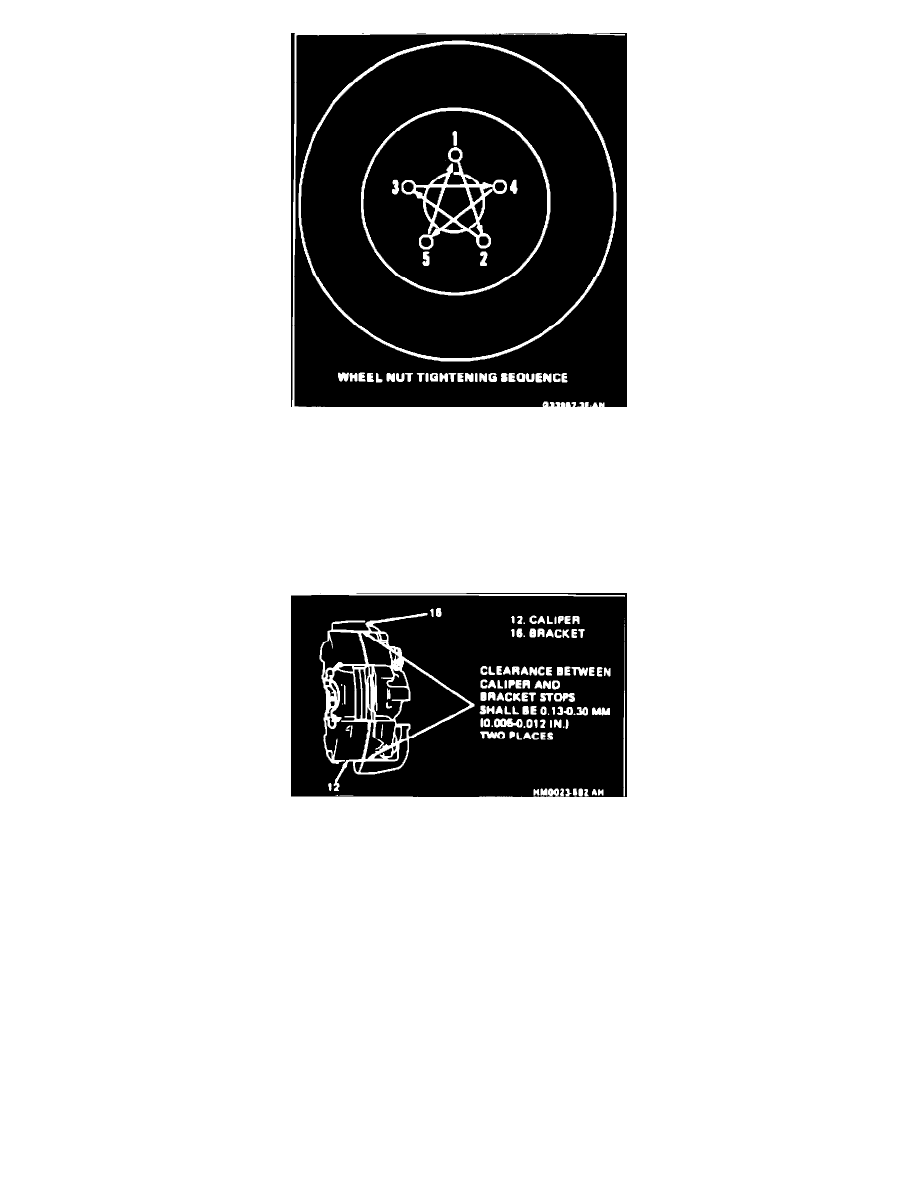Suburban 3/4 Ton 4WD V8-305 5.0L (1986)

FIGURE 1 - WHEEL NUT TIGHTENING
WHEEL BOLT TORQUE:
Overtorqued wheel nuts or torquing wheel nuts without alternating the tightening sequence, especially on aluminum wheels, can also create a rotor
runout condition. Refer to Figure 1.
The use of a torque wrench when tightening wheel nuts is necessary to prevent distortion of the rotor, hub or wheel. The wheel nuts should be tightened
in two steps to assure an even clamp load.
FIGURE 2 - CALL TO BRACKET CLEARANCE
CALIPER DRAG:
Caliper drag is usually caused by interference between the caliper to knuckle interface or a caliper bolt binding on the caliper bolt bushing.
Caliper to knuckle clearance is important. Clearance should be checked with the caliper in position and the caliper mounting bolts properly torqued. If
excessive clearance exists, a clunking noise may occur on each brake apply. Too little clearance can cause caliper drag. The desired clearance is .005 -
.012 in. at each caliper to knuckle bracket interface, or a total of .010 - .024 in. The caliper bracket stops can be filed -to obtain proper clearance. Refer
to Figure 2.
